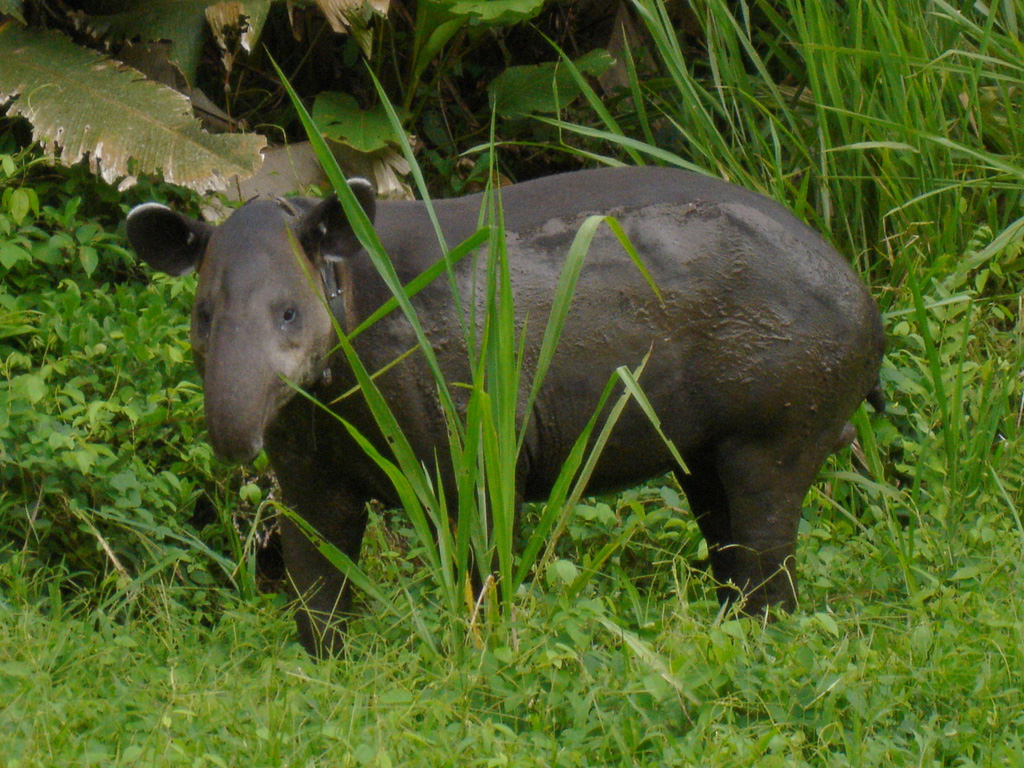n the heart of Costa Rica, a land renowned for its pura vida and lush landscapes, biologist Esteban Brenes-Mora turned a potential roadblock into a highway of hope for the country’s tapirs. When reports surfaced in 2013 of these gentle giants becoming unintended speed bumps on the Pan-American Highway, Brenes-Mora, then working on tapir and tiger conservation in Malaysia, rushed home, determined to crack the case. Little did he know, he was about to uncover a story of conservation success so inspiring, it could make a sloth sprint.
The Mystery of the Crossing Tapirs
The puzzle Brenes-Mora faced was no small feat: why were tapirs, Central America’s largest mammals, risking life and limb crossing one of the country’s busiest highways? The answer lay in Costa Rica’s very own environmental comeback story. Thanks to efforts to restore its forests, the tapirs weren’t being pushed onto the road; they were simply roaming through their revitalized home. “The forests had recovered, and with them, the wildlife,” Brenes-Mora realized, turning a problem into a testament to Costa Rica’s green revolution.
From Near Extinction to Eco-Celebrity
Global Environmental Facility CEO Carlos Manuel Rodríguez, a tapir enthusiast and former Costa Rican Minister of Environment and Energy, played a pivotal role in this eco-renaissance. His policies, which included compensating farmers for ecosystem preservation and boosting ecotourism, not only halted rapid deforestation but also set the stage for wildlife, including tapirs, to thrive once more. Rodríguez, who once survived a close encounter with a protective tapir mother, sees these animals as symbols of Costa Rica’s ecological resilience.
Gardeners of the Forest
Tapirs, with their unique prehensile snouts and colossal appetite for vegetation, are not just forest dwellers but forest makers. Dubbed the “gardeners of the forest,” they’re instrumental in seed dispersal, maintaining the delicate balance of their ecosystems. “You have 500 pounds of herbivore with a really inefficient digestion,” Brenes-Mora explained, highlighting how tapirs essentially plant the future of the forest with every step they take.
A Community Effort
The road to coexistence wasn’t just paved by policy changes but by community engagement and innovative solutions. After reducing tapir road fatalities by 70%, Brenes-Mora faced a new challenge: tapirs raiding crops. Collaborating with farmers and conservation groups, they erected electric fences, transforming potential adversaries into tapir advocates. The community now celebrates the presence of tapirs, proof that when nature and humans collaborate, everyone wins.
The Power of Persistence
With an estimated 1,500 tapirs now roaming Costa Rica’s forests, the future looks bright, not just for these ancient creatures but for the planet. The success in Costa Rica is a beacon of hope, demonstrating that with concerted conservation efforts, species on the brink can bounce back. Brenes-Mora’s journey from a childhood fascination with tapirs to leading conservation efforts underscores the power of passion in driving change.
A Global Blueprint for Conservation
Costa Rica’s story is more than a local victory; it’s a model for the world. The Baird’s Tapir Survival Alliance, born from a collective desire to protect these animals across borders, exemplifies how regional collaboration can have a global impact. “There’s a lot of hope,” Brenes-Mora stated, a sentiment echoed by Rodríguez, who believes the lessons learned in Costa Rica can and should be applied worldwide.
As Costa Rica continues to lead by example, the tapir’s journey from highway hazard to conservation icon serves as a reminder that even the most daunting challenges can be overcome with creativity, collaboration, and a whole lot of heart. In the end, the tapirs of Costa Rica aren’t just surviving; they’re thriving, a testament to the country’s commitment to preserving the pura vida for all its inhabitants.


1 comment
[…] Source link […]